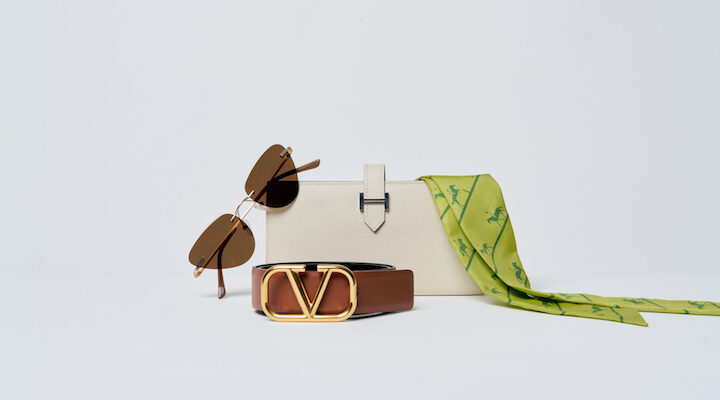High End is Australia’s premier luxury resale platform and it is ready to unleash its industry-leading AI technology to ensure secondhand designer items are authentic. Secondhand luxury holds promise with the industry estimated to be worth US$52 billion by 2026, according to Statista. Yet the challenges of authenticity, profitability and rejection by designer brands have prevented retailers from nailing down a scalable platform. Enter the High End app. The platform originated as a ‘private�
private’ Facebook group in 2014 by Brooke Marks who was looking for a peer-to-peer marketplace to buy and sell her unwanted luxury designer items.
Over nearly a decade, the membership of the original High End Facebook group membership grew to nearly 110,000 members, as fashion insiders shared their online haven to buy and sell luxury items.
“It started as a ‘secret’ group, an exclusive invite-only group for friends and their inner circles,” Marks, now the co-CEO and COO of High End, told Inside Retail.
“High End’s launch quickly spread via word of mouth to other fashion enthusiasts but without an invitation, outsiders had no way in.”
Fast forward to 2020 when Lauren Kennedy, now co-CEO and CTO of High End, reached out to Marks about building a business model around resale technology for authentication, pricing and investment ratings to meet the growing demand for luxury resale.
The dynamic duo joined forces to conceptualise a robust business plan that overcame the luxury resale industry’s pain points and successfully raised seed funding in just two weeks in May and launched the app five months later in November of this year.
Overcoming the challenge of authentication with AI
The greatest challenge luxury resale marketplaces face is authentication and quality assurance with fake designer items and flooding platforms, creating a counterfeit industry estimated at $1.8 trillion.
Marks and Kennedy are seeking to disrupt the luxury resale industry with their AI-powered automated authentication models.
“The High End app is resale innovation that can fit in your pocket, revolutionising resale by automating authentication,” said Marks.
“Customers will be empowered with innovative models – authentication, pricing, trend predictions – all the tools needed to succeed in the resale world.”
A survey was conducted on the original Facebook group asking users what the most important factor was when purchasing on the resale market, and 91 per cent indicated that it was indeed authentication.
In the High End app, buyers will be able to shop in complete confidence knowing that sellers had to upload a photo of any item under $1000 to be cross-referenced and verified as authentic by High End’s database. While items valued over $1000 will need to be sent to High End’s Sydney office for in-person authentication for a flat fee of $45.
“The problem of authentication needs to be thought of in an absolute sense. Boundaries need to be drawn so we can accurately address the authentication problem,” said Kennedy.
“Our boundaries are drawn with our curated list of [approximately] 300 brands, we only accept products that are in at least near new condition with minimal wear and tear and are within five years old.”
“This not only sustains our brand image and reduces counterfeit risk, but it makes sure that the images that feed into our authentication models are not misleading.”
The integration of AI technology is set to create consumer trust in an industry that has been hard to both regulate and scale.
The rise and rise of secondhand luxury
The growing demand for secondhand luxury goods could be attributed to a series of compounding trends; the rise of sustainable and conscious consumerism, current cost-of-living crisis and the opportunity for consumers to own unique or vintage designer items.
Historically, luxury and heritage brands have been hesitant to jump into the resale market due to concerns about how it would affect their wholesale revenue and perceived exclusivity.
But with the consumer-driven luxury resale industry booming and resale players scaling regardless of cooperation, designer brands are starting to take a second look at the secondhand market.
“It’s encouraging to see more brands embracing the secondhand market and adopting sustainable practices, something that was quite taboo in the past,” said Marks.
“This shift reflects a broader industry awareness of environmental concerns and a willingness to explore innovative business models that align with changing consumer values.”
Although committed to remain a 95 per cent peer-to-peer luxury marketplace, High End is already looking towards potential collaborations with brands as the broader fashion industry warms up to the opportunity of the resale market.
“Whether we offer an online warehouse experience for those brands, sample stock or even a collaboration with brands in an unexpected way for a sustainable product release,” said Marks.
“I think we have some exciting opportunities to partner with brands in unexpected ways.”
“We aim to provide customers with an elevated, secure and aesthetically pleasing experience and it’s only the beginning”.
Now the High End founders are focussed on converting their community on Facebook over to their AI powered app.







